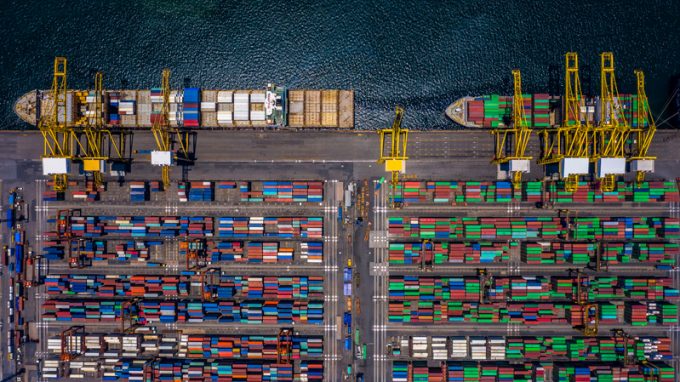The 'enviable position' of carriers' balance sheets...
What the numbers suggest

With free trade under threat and globalisation slowing, terminal operator DP World plans to give container supply chains a boost with “an integrated, asset-based approach” to logistics and digitisation.
Andrew Hoad, DP World’s chief executive for Asia Pacific, said digitisation was paving the way for new efficiencies and opportunities to give trade a “helping hand”.
“If transport and logistics providers can really get their act together on digital and on the physical conveyance of goods, so much cost can be taken out of supply chains – and that will create trade and wealth,” he told The Loadstar.
The WTO claims trade growth of 35% can be delivered within 15 years through digital technology.
A key area in need of improvement is supply chain visibility. Mr Hoad said shippers’ “number-one issue” was getting information on where their cargo is and predicting when it will arrive.
“Even though there’s some very well-established, professional forwarding companies, it’s still not quite there, particularly in relation to customs, and there’s a couple of things that can be done to improve this,” he added.
For example, DP World signed an agreement with local authorities in Yiwu, one of China’s biggest manufacturing hubs, to set up a “straight-through warehouse” project that allows Dubai customs to clear cargo before it leaves for Jebel Ali.
“This is quite unusual, and I haven’t heard of anybody else doing it,” he claimed.
Another potential improvement to cargo visibility lies with the worldwide proliferation of low-cost sensor technology.
“It’s estimated there could be a trillion sensors in the next decade in just about every type of machinery or consumer item you can imagine,” Mr Hoad noted. “Box handling equipment will use sensors to talk to each other and feed data through to terminal operating systems, which in turn will connect to port information networks, allowing shippers to see where their cargo is and where it’s being handled. This stuff is either here or arriving soon.”
At the heart of this vision for more efficient supply chains is DP World’s contention that “data is the new container”. The idea, first discussed by the group’s chairman in January, is to use data to “create intelligence out of chaos” and solve the major inefficiency of retailers forced to order more stock earlier than necessary due to a lack of visibility.
“Longer-term, I think there’s going to be a move towards the ‘grey box’ – whereby somebody is managing the cargo through digital information, whether that’s a shipping line, a port, a forwarder, or even an as yet unperceived digital native,” Mr Hoad explained.
“Because increasingly in an environment where consumers expect 24-hour delivery, you’re going to see these grey boxes operated by supply chain managers with the digital capability to reach inside a box, unpack cargo, redistribute it and decide which routing it takes.
“Eventually it will move away from boxes monitored with sensors, to a new way forward where people are managing by SKU numbers or product numbers. Whether it goes by shipping line or by rail, these will all be decisions taken by reading data as it comes through. It will be a decision made by one system reading another system, with no human intervention at all.”
In the meantime, DP World is developing its physical assets as well as its digital capabilities to meet its “leading enabler of global trade” ambitions.
“We’re not just stevedore or port operator – we’re part of the supply chain and building trade networks very much in the tradition of Dubai as a trading hub,” noted Mr Hoad.
Last year’s acquisitions of Unifeeder, India’s ICD and warehouse operator CWC and Peruvian logistics company CAM all support this strategy, he said.
“Transport companies have got to go into digital in a big way – it’s all about data flow and management,” said Mr Hoad. “But, and I think this is the key thing, in such an environment if you have assets in the supply chain as well, I think that puts you in a much stronger commercial position and makes you a more robust company in that digital environment.
“Everybody’s moving into everybody else’s space. So what we’re doing is not unusual, even though we have more of an asset-based approach. What is unusual is mobility innovation and the new tech we’re bringing online.”
Comment on this article